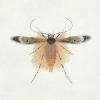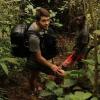Camera traps have been a key part of the conservation toolkit for decades. Remotely triggered video or still cameras allow researchers and managers to monitor cryptic species, survey populations, and support enforcement responses by documenting illegal activities. Increasingly, machine learning is being implemented to automate the processing of data generated by camera traps.
A recent study published showed that, despite being well-established and widely used tools in conservation, progress in the development of camera traps has plateaued since the emergence of the modern model in the mid-2000s, leaving users struggling with many of the same issues they faced a decade ago. That manufacturer ratings have not improved over time, despite technological advancements, demonstrates the need for a new generation of innovative conservation camera traps. Join this group and explore existing efforts, established needs, and what next-generation camera traps might look like - including the integration of AI for data processing through initiatives like Wildlife Insights and Wild Me.
Group Highlights:
Our past Tech Tutors seasons featured multiple episodes for experienced and new camera trappers. How Do I Repair My Camera Traps? featured WILDLABS members Laure Joanny, Alistair Stewart, and Rob Appleby and featured many troubleshooting and DIY resources for common issues.
For camera trap users looking to incorporate machine learning into the data analysis process, Sara Beery's How do I get started using machine learning for my camera traps? is an incredible resource discussing the user-friendly tool MegaDetector.
And for those who are new to camera trapping, Marcella Kelly's How do I choose the right camera trap(s) based on interests, goals, and species? will help you make important decisions based on factors like species, environment, power, durability, and more.
Finally, for an in-depth conversation on camera trap hardware and software, check out the Camera Traps Virtual Meetup featuring Sara Beery, Roland Kays, and Sam Seccombe.
And while you're here, be sure to stop by the camera trap community's collaborative troubleshooting data bank, where we're compiling common problems with the goal of creating a consistent place to exchange tips and tricks!
Header photo: Stephanie O'Donnell
No showcases have been added to this group yet.

- 1 Resources
- 5 Discussions
- 9 Groups
R&D lead @ enlaps


- 0 Resources
- 6 Discussions
- 2 Groups
- @AllySabur
- | Mr
"Founder of Worker Bees Africa, advancing bee conservation through innovation."
- 0 Resources
- 0 Discussions
- 3 Groups
- @Harsha
- | He/Him
I am a marine biologist / acoustic ecologist from Australia. Fascinated by bioacoustics, I always look forward to learning from people in conservation!
- 0 Resources
- 0 Discussions
- 11 Groups
Alberta Biodiversity Monitoring Institute (ABMI) & SENSR
We track changes in wildlife and their habitats in Alberta, working collaboratively to provide ongoing, relevant, scientifically credible information.


- 2 Resources
- 0 Discussions
- 4 Groups
- @Adwait
- | He
Postdoc at Max Planck Institute of Animal Behaviour
- 0 Resources
- 0 Discussions
- 4 Groups
Holder of BSc in Applied Zoology. Assistant Ecologist at Ruaha National park.


- 0 Resources
- 7 Discussions
- 12 Groups
University of Zurich
PhD student at the University of Zürich (CH) in PopEcol group, working with camera traps and mammals
- 0 Resources
- 0 Discussions
- 8 Groups
World Wide Fund for Nature/ World Wildlife Fund (WWF)
- 0 Resources
- 2 Discussions
- 5 Groups
- 0 Resources
- 0 Discussions
- 5 Groups
- @sroilo
- | she/her
- 0 Resources
- 0 Discussions
- 4 Groups
- @nabilla.nuril
- | She/Her
University College London (UCL)
- 0 Resources
- 0 Discussions
- 11 Groups
Machine learning is widely recognized as the solution to camera trap data processing, but a user-friendly and broadly-accessible system for putting this tech to use has not yet been developed. In this case study,...
1 October 2018
Motion-sensing wildlife-tracking cameras in South Sudan have captured 425,000 photos, documenting species not previously known to be found in this richly forested area. The team is now asking for your help to identify ...
22 August 2018
In this case study, Sam Seccombe documents his efforts to track down an off-the-shelf remote camera setup with the capability to stream quality, reliable video from the field. As he explains, it was a slighlty more...
25 July 2018
This latest chapter in the Conservation Technology Series from WWF-UK looks at the opportunities, challenges and state-of-the-art of satellite remote sensing for conservation applications. This issue reviews available...
23 April 2018
Are you an architect, engineer, designer or a scientist? Can you design and manufacture a prototype open source plant-BES (bio electrochemical system) to power a camera trap and environmental sensors in tropical forests...
3 April 2018
Hundreds of people joined our #Tech4Wildlife photo challenge this year, showcasing all the incredible ways tech is being used to support wildlife conservation. We've seen proximity loggers on Tasmanian Devils in...
3 March 2018
‘The Field’… Say the words ‘The Field’ to a group of conservationists and it will immediately conjure up vivid memories of everything from sticky wet rainforests to burning dusty deserts. What’s more, it’s almost...
17 January 2018
Article
A new research project is looking to investigate whether technology combined with the ancient skills and knowledge of Namibian trackers can help save cheetahs from extinction. Called FIT Cheetahs, the research project...
4 December 2017
Our panel of international experts has been hard at work reviewing the 47 proposals we recieved for innovative technological tools to address human wildlife conflict. The panelists have systematically been assessing the...
20 October 2017
The inherent complexity of not only deploying technologies in the field but also doing so in a scientifically rigorous manner can prove a substantial barrier for the effective use of conservation technologies, and clear...
11 October 2017
Article
As pressure on marine resources increases, fishers have to explore deeper and deeper waters to make a living. What does this mean for Belize’s deep-sea sharks? In an effort to understand the threats to these animals,...
26 September 2017
Frustrated by the limitations of the tools that were available for managing large camera trap data sets, Heidi Hendry and Chris Mann set out to develop something that met their needs, and thus, Camelot was born. In...
7 July 2017
August 2025
event
event
September 2025
event
event
event
April 2023
February 2023
58 Products
Recently updated products
4 Products
Recently updated products
| Description | Activity | Replies | Groups | Updated |
|---|---|---|---|---|
| Have a look at @tessa_rhinehart 's TechTutors on scaling up acoustic surveys. This is addressed at 11 min: The "hexadecapus" is the hardware, but transfer is automated by... |
|
Camera Traps, Data management and processing tools | 2 years 10 months ago | |
| My most prized camera trap image - a hummingbird caught on camera! |
|
Autonomous Camera Traps for Insects, Camera Traps | 2 years 10 months ago | |
| I would agree that primates probably aren't your biggest concern, animal-destroyer wise. At least in the Malagasy rainforests, lemurs are highly arboreal so if you have trail cams... |
|
Camera Traps | 2 years 10 months ago | |
| Thanks so much!! |
|
Acoustics, AI for Conservation, Animal Movement, Camera Traps, Community Base, Data management and processing tools, Drones, eDNA & Genomics, Emerging Tech, Open Source Solutions, Geospatial, Software Development | 2 years 10 months ago | |
| There is this other WILDLABS discussion thread where tons of people provided input on their experiences with lots of different brands & models which may help. You might... |
|
Camera Traps | 2 years 10 months ago | |
| Done lots of this over the years and it depends on the species really. If you want incubation behaviour and hence success or otherwise using temperature then the Thermocron... |
|
Animal Movement, Sensors, Build Your Own Data Logger Community, Camera Traps | 2 years 10 months ago | |
| Might be good to add this to the 'Automated Camera Traps for Insects' group |
|
Camera Traps, Autonomous Camera Traps for Insects | 2 years 10 months ago | |
| Good information, Thank you! |
|
Camera Traps | 2 years 11 months ago | |
| Wifi SD cards exist https://www.amazon.ca/s?k=wifi+sd+card&crid=3HDWHASJGRU8X&sprefix=wifi+sd%2Caps%2C148&ref=nb_sb_ss_ts-doa-p_2_7Never tried them personally... |
|
Camera Traps | 2 years 11 months ago | |
| Hi Kim,Thanks for the response. I think they can hear our cameras clicking when they are set off and they come to see what is happening so I would totally agree with the... |
|
Camera Traps | 3 years ago | |
| Hi Yvan,If you find something which reaches your expectation and especially the ability to identify individual with plumage patterns I will be intereted.In the same idea that... |
|
AI for Conservation, Camera Traps | 3 years ago | |
| I'm interested in your findings for the same utilization, so what did you decide to do ? |
|
Camera Traps | 3 years ago |













































